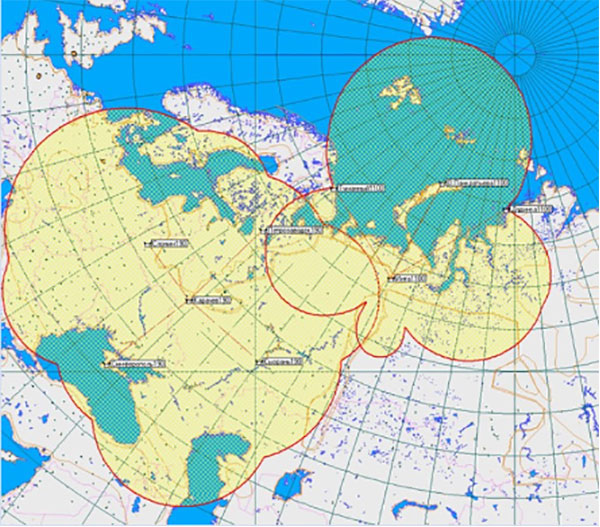Image: Russia Internavigation Research and Technical Center of Advanced Navigation
Blog Editor’s Note: We recently commented on and published a link to an article in ARMADA about Russia’s probably use of eLoran/Loran/Chayka in the war in Ukraine.
That article contained a graphic showing the coverage of three Loran transmitters that was far too small. We failed to point that out in our commentary.
RNTF member, Mitch Narins, who has experience with the technology wrote us to correct the record. We will go back and add that along with the official Russian graphic included herewith.
Thanks Mitch. We always appreciate hearing from our readers!
Re: The Armada Article addressing Russian Chayka use in Ukraine
While I found the article interesting and am glad to see some recognition of the value of high power/low frequency position, navigation, and timing (PNT) systems to ensure resilient PNT services, I was struck by the coverage map that was provided in the article. Using my mapping program to duplicate the size of the coverage circles depicted in the article, it would appear that the author estimated the coverage area of each Chyka station to be a circle with a radius of approximately 250 statute miles. In actuality, the coverage of such a station should easily be twice that radius and, depending on other factors, perhaps quite a bit more depending on the required performance metrics of the application.
One factor that can affect position performance is, of course, the geometry of the stations. In the case of Ukraine, it would appear that the three Chyka stations were placed at uniquely ideal locations to take advantage of their PNT services — notably the one in Crimea that Russia regained control of when they annexed the peninsula.
It continues to interest and concern me that although both Russia and Chine see the need and importance to maintain their resilient high power/low frequency PNT solutions, despite both operating their own GNSS constellations, the Western nations (i.e., the U.S., Canada, Western Europe, and Japan) abandoned theirs (Loran-C) a decade ago and, despite the recommendations from many, many PNT Subject Matter Experts, never pursued eLoran as the natural resilient PNT follow-on. Only Saudi Arabia and South Korea have had the good sense to both maintain and improve their Loran capabilities.
As someone who grew up in the 20th century, I continue to be quite amazed that the most critical decisions about how to protect and defend our critical infrastructure are dictated by financial analysts, rather than those directly responsible for the safety, security, and economic benefits of the Nation. As a systems engineer, my perception is that user needs drive requirements drive development of solutions and that the financial offices’ role is to provide the resources necessary to enact these strategic decisions. Because these roles shifted so drastically over the past twenty years, we find ourselves in a much more perilous position and needing to “catch up” to others who had the good sense to recognize the value of resilient and robust and complimentary PNT solutions. As we continue to explore new means of hardening signals from space in all orbital planes, I sincerely hope that the relatively small amount of resources needed to restore our ground-based PNT infrastructure is made available and, by including new innovations, we can restore a system that will more than prove its value to land, air, and sea users in the 21st century. /r
Best regards,
Mitch Narins, CISSP®/ FRIN
Principal Consultant / Owner
[email protected] (secure)
Information is not knowledge. The only source of knowledge is experience. – A. Einstein


